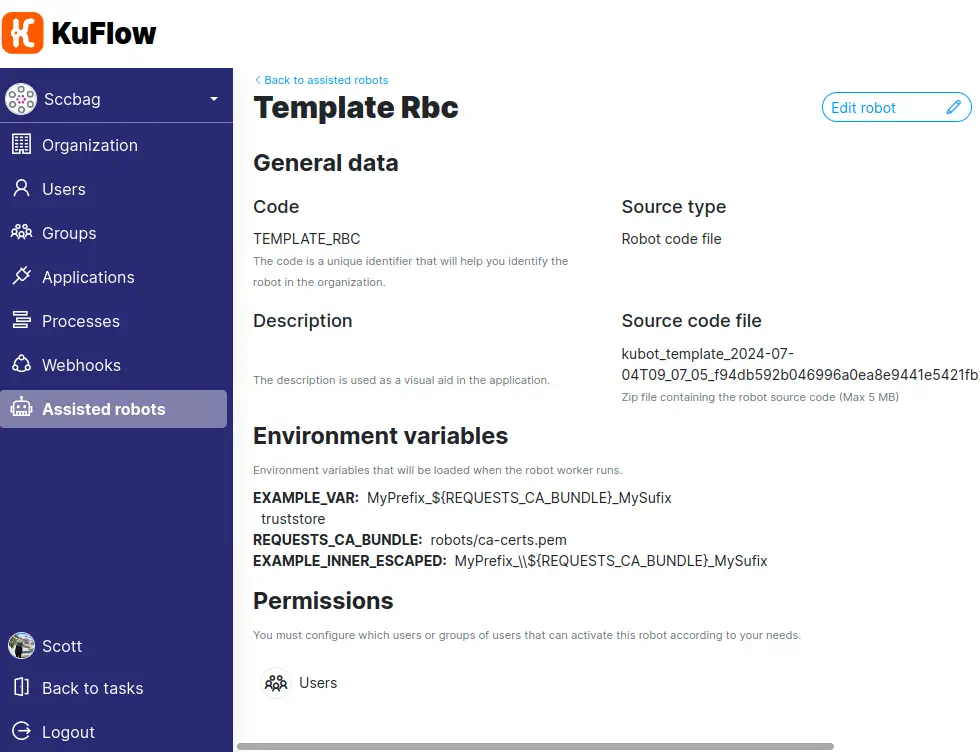Assisted robots
This is where the assisted robots or as we call them in KuFlow, Kubots, are managed. You will be able to create, update or delete KuBots from the organization. Please note that KuBots administration can only be performed by a user with the "Organization Administrator" role.
KuBots management
Once we have our package, the next step is to upload it to the KuFlow cloud application. To do this, in the administrative part, we select the “Assisted robots” option and we will navigate to a list that contains the robots currently available in the organization. From here we can create, update or delete KuBots.

We must configure our Kubot with the following information:
-
Name (Required)
- Visual label that will help you identify your KuBot when managing it in the app.
-
Code (Required)
- Identifier. It is unique among all KuBots in the tenant.
-
Description (Optional)
- Descriptive text of the contents of the KuBot.
-
Source type (Required)
- Choosing the KuBot package type, you must choose
Robot code file, the valueRobot framework Python Wheelfile is deprecated
- Choosing the KuBot package type, you must choose
-
Source code file (Required)
- The package containing the KuBot.
-
Environment variables (Optional)
- Environment variables that will be exposed to the KuBot process, both in its installation and in the executions of the process. Go here to understand how the variables work and learn more
-
Permissions (Optional, but if none are defined, no one will be able to list it in KuBot Manager)
- Here you must choose the users or user groups that will have access to the Kubot from the KuBot Manager app for the purpose of listing and installing them. Note that having permission for this does not mean that you can execute jobs for said KuBot, this must be configured in the process definition section.

